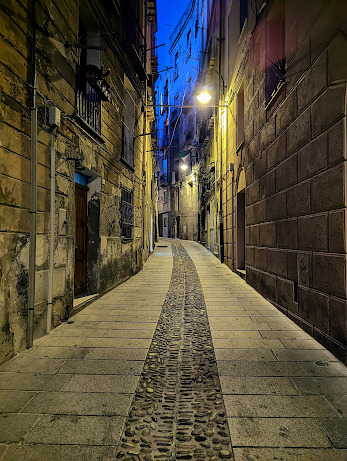Architecture of the Vibe II: The Sidewalk and You
In Architecture of the Vibe, by me, I wrote about Peter Eisenman’s concept of the culture of congestion and how it applied to Ridley Scott’s film Blade Runner. Specifically I took a position against the culture of congestion, claiming the most crowded of spaces often ironically make us feel the least socially connected. After reading through Jane Jacobs’ “The Use of Sidewalks”, I would like to pose a counter position. Can the most crowded of spaces make us feel the most socially connected?
“This is something everyone already knows: A well-used city street is apt to be a safe street. A deserted city street is apt to be unsafe. But how does this work, really?” - Jacobs in “The Use of Sidewalks”
How does it work? Jacobs goes on to suggest that on frequently-traversed streets, there is a sort of self-policing that goes on among members in the community and passersby. What forms is an inherent honor system that broadcasts a message of safety and security. She also elaborates on types of architecture and urban fabric that lend themselves to house such a system. This makes a lot of sense, especially when cross-referencing our own experiences. Most of us have been to a city, and most of us know the feeling of insecurity that comes from walking on an empty street, only to make it back to a busier promenade and feel a wave of relief wash over. People are here, going about their daily lives, I am safe, the vibes are good.
As I mentioned, however, this is a counter position. Surely, there is still some level of crowding and spatial congestion that evokes the opposite effect. I wouldn’t say I feel comfortable, connected or even particularly secure shouldering people around in downtown Clemson on a weekend. So where do we draw the line? When does a busy environment crossover from comforting to discomforting? What kinds of spaces do you think lend themselves to either or both, good vibes and bad vibes? Leave a comment below.


This is a really interesting topic and I'm not sure if I have the right answer for it or if there really is a right answer because it all depends on the specific individual. Of course, most of us don't feel comfortable being shoulder to shoulder, but as a woman, I definitely wouldn't feel as safe if I was walking alone with barely anyone in sight. If I were theorize the "perfect" distance, I would say arms length. It would still socially connect us, give us the comfort of space, all while not feeling alone or needing us to watch our surroundings. To design an urban setting that accounts for the amount people in that area, and how they feel most comfortable is probably something that needs to be further researched and practiced.
ReplyDeleteThis is an interesting question you bring up - and I don't necessarily have an answer but I do have thoughts and experiences that I have not yet formed an opinion on. - In Italy, especially in old town centers, the most active and alive streets are the safest, most popular, and attract the most people from other towns without that kind of atmosphere. So I guess a part of it is, what are these people doing in the street? and how old are they? Many older couples will drive 20 minutes to a town, have a aperitivo and walk around town aimlessly for the rest of the night. When many do this, it becomes comfortable. But then I look at towns in America that may have similar layouts (Annapolis was the closest to a European town layout for me) and a similar thing occurs. So maybe its something to do with food/drink that bring people out? And along with more people it scares out crime? I can't think of a town that is enjoyable to experience that does not have an aspect of food and drink in public settings. These cities also act as parks to stroll in rather than grids to efficiently get to where you need to get to.. maybe thats a part of it. Anyways I like this topic.
ReplyDeleteI can relate to this topic. In India, they say, "Mumbai is one of the safest cities in the state because the sidewalks and roads are always crowded!" Even you are walking alone at 2AM, you will still feel a sense of safety because people are around. Perhaps in situations where others are nearby and able to hear you, we feel safer since they can run to you for assistance in an emergency.
ReplyDelete